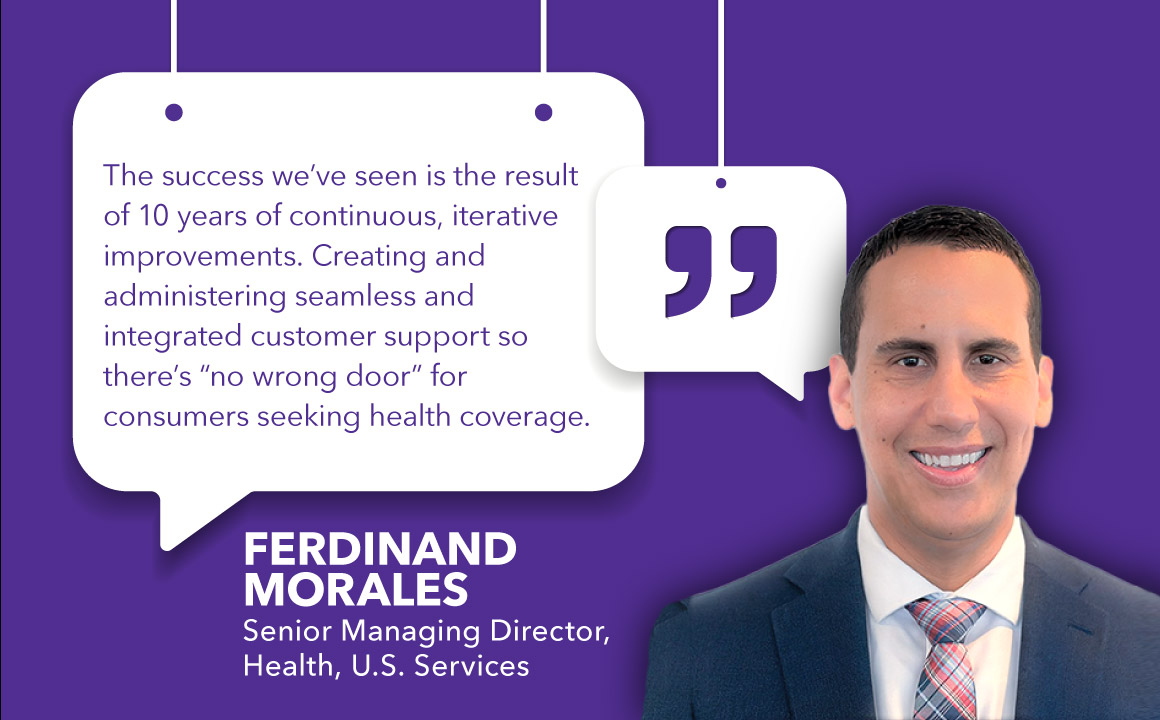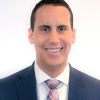
How do you make it easier for people to access health insurance coverage when life happens—–such as marriage, birth of a child, or job loss? Under the Affordable Care Act (ACA) this idea became reality, especially in states that established their own health insurance marketplaces. Fast forward a decade later and millions of Americans have accessed and enrolled in high-quality, affordable health insurance coverage through state-based marketplaces (SBMs), with the overall benefit of reducing the number of uninsured. In 2023, more than four million people selected a health plan through an SBM. Altogether, as of January 24, 2024 more than 21 million people selected a health plan through one of the 19 SBM’s and through the federal marketplace, an increase of nearly 5 million from the previous year.
New York was among the original states to establish an SBM and one of the first states to implement a “single point of entry” model for consumers seeking health insurance. Today, this integrated marketplace known as NY State of Health (NYSOH), provides coverage to more than seven million New Yorkers enrolled in Qualified Health Plans, Medicaid, the Children’s Health Insurance Program (CHIP), and the Essential Plan—resulting in an uninsured rate below five percent. However, it was no easy task to get there.
New York partnered with Maximus to launch NYSOH in 2013. At the time, my role as Executive Director of NYSOH meant I was working closely with the Maximus team. I recently sat down with Ferdinand Morales, Senior Managing Director, Health, U.S. Services, as we reflected on our time working together to stand up the state’s SBM, what’s changed over the last decade, and what lies ahead for states that are transitioning (or considering a transition) from the federal exchange to their own SBMs.
When you think back to the initial launch of SBMs in 2013, what were the biggest challenges?
Morales: Maximus was helping a number of states stand up their state-based marketplaces which included creating and administering seamless customer support and using innovative technology. In the beginning, capacity planning—having the right scale for technology and consumer support—was top of mind. We could see that some states looked okay, but others had varying levels of performance and knew we’d have to act quickly and add operational capacity. Now a decade later, we’ve become very good at forecasting operational needs and quickly scaling to those needs, both for states with existing SBMs and those implementing new SBMs. For example, we understand the call patterns and the peak day and times consumers prefer to contact customer service. This is important because it helps us determine the level of support to meet consumer needs.
What can you identify as the biggest improvements made in the last decade?
Morales: We implemented innovative technology—microlearning and other tools—to increase the speed to proficiency for our contact center staff. And we were a trailblazer in the digital transformation of customer service with the development of the NYSOH Mobile Upload App which streamlines the health insurance program eligibility process, significantly reduces document intake and processing time, and enables New Yorkers to access their insurance sooner.
The success we’ve seen is the result of 10 years of continuous, iterative improvements. Creating and administering seamless and integrated customer support so there’s “no wrong door” for consumers seeking health coverage. What we mean by that, is consumers use a single streamlined application to enroll in the coverage (Medicaid, Basic Health Plan, QHP) they are eligible for. Other successes include using innovative technology infrastructure across the programs we support and delivering superior customer service experience through well-run customer contact centers. The list is long, but these are just a few areas that stand out.

Compared to those early days, what’s changed?
Morales: Maturity and the best practices that come with it. We’ve learned what works in the application and renewal process. Over time, both have become easier for consumers because we’ve simplified the application language, determined what data elements can be captured better at a household versus individual level, identified the best time to engage consumers with reminders to take action, introduced more automation in the data validation/checks, and reevaluated reasonable compatibility thresholds.
Health insurance literacy—the knowledge, ability, and confidence needed to evaluate health insurance options and choose the best plan for your needs— has also changed. The ACA has allowed us to speak “health insurance language” in a more effective way that’s easier for consumers to understand. It’s hard to imagine now, but I remember initially having to explain terminologies like co-insurance, deductibles, premiums, and tax credits. For consumers who had never been covered by employer-sponsored insurance, these were unknown terms and concepts for them.
Certainly, affordability is another area of change. It’s gratifying to see how we, as a nation, have broadened healthcare coverage through federal waivers and additional subsidies. And over the last 10 years, especially during the COVID-19 pandemic, we’ve witnessed the importance of continuation of coverage and found ways to best facilitate that through integration. Although not every state has embraced this model integration, also referred to as a “single point of entry,” allows consumers to enroll in a health plan through a single streamlined application.
In recent years, we’ve seen additional states consider a transition from the federal Health Insurance Marketplace to a state-based marketplace. What’s your view on why this is happening now?
Morales: States want control of their own markets because it gives them the flexibility to develop the solutions that best fit the people that live in their state. There are many levers you can pull in an SBM that you can’t pull when you are part of the federal marketplace. For example, you can set your own annual open enrollment period—and extend it if needed. You can determine the policies and timeframes for Special Enrollment Periods. You can design a Navigator program and implement a marketing strategy that understands and meets the needs of the people in your state. You can even determine how your SBM will work with insurance brokers in relation to exchange products. It really comes down to greater autonomy and opportunities to boost and maintain enrollment.
What should states consider when contemplating a move to an SBM?
Morales: Two pieces of advice: keep the consumer at the center of decisions and choose the right operational partners. When making decisions about a process or policy, think about your consumers and how the change will impact their experience—positively or negatively. Customer experience is critical when your goal is to make it easier for people to access health insurance coverage. A well-run contact center operated by a partner with deep government experience, technological expertise, and the operational capacity to quickly scale up and down is key to boosting enrollment and retention in health coverage.
What advice do you have for those states transitioning to their own SBM?
Morales: This time, I have three thoughts for states that are already making the move to set up their own SBMs.
First, set short-term and long-term goals. Your short-term goals will likely be related to the transition, but your longer-term goals will go back to what you want your SBM to achieve: expanding healthcare coverage and making it easier for people to enroll in health insurance.
Second, lean on best practices. Talk to other states with SBMs. You’ll likely glean different insights from the ones that started with SBMs and from the ones that made the transition during the past 10 years. Either way, you’ll benefit from their lessons learned.
And third, if permitted, commit to a “no wrong door” eligibility and enrollment system. Get people to the door and to the right place for healthcare coverage. If you can commit to that, people will avoid gaps in coverage when they experience changes in income or family circumstances that result in them moving back and forth between programs like Medicaid and CHIP, Qualified Health Plan, and in some states, the Basic Health Plan. Taking that burden off the consumers can ultimately help drive better health outcomes for your state.

